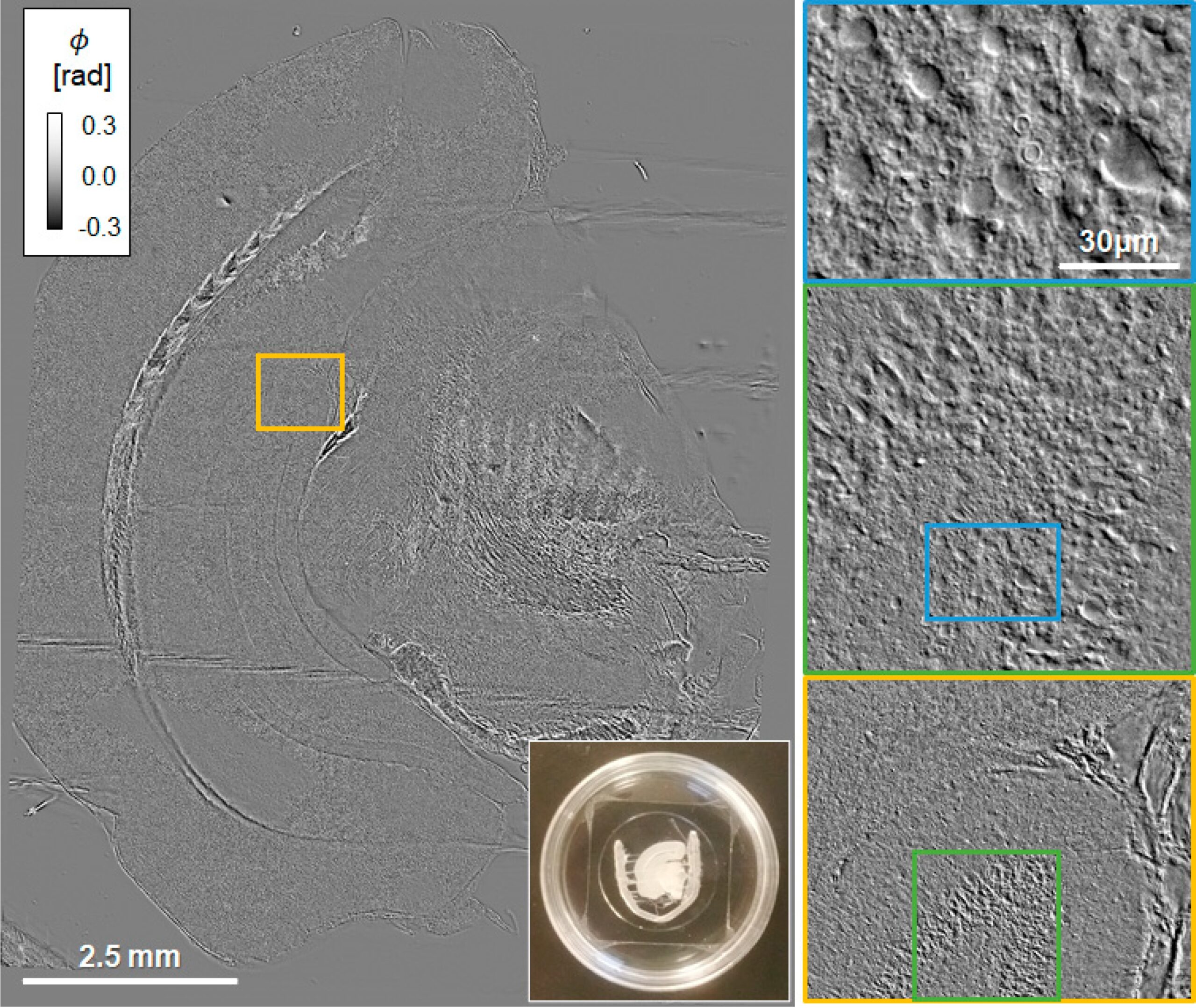Circadian Volume Changes in Hippocampal Glia Studied by Label-Free Interferometric Imaging
Naseri Kouzehgarani, G.; Kandel, M.E.; Sakakura, M.; Dupaty, J.S.; Popescu, G.; Gillette, M.U.
Cells 11 2022 2073
![]()

Complex brain functions, including learning and memory, arise in part from the modulatory role of astrocytes on neuronal circuits. Functionally, the dentate gyrus (DG) exhibits differences in the acquisition of long-term potentiation (LTP) between day and night. We hypothesize that the dynamic nature of astrocyte morphology plays an important role in the functional circuitry of hippocampal learning and memory, specifically in the DG. Standard microscopy techniques, such as differential interference contrast (DIC), present insufficient contrast for detecting changes in astrocyte structure and function and are unable to inform on the intrinsic structure of the sample in a quantitative manner. Recently, gradient light interference microscopy (GLIM) has been developed to upgrade a DIC microscope with quantitative capabilities such as single-cell dry mass and volume characterization. Here, we present a methodology for combining GLIM and electrophysiology to quantify the astrocyte morphological behavior over the day-night cycle. Colocalized measurements of GLIM and fluorescence allowed us to quantify the dry masses and volumes of hundreds of astrocytes. Our results indicate that, on average, there is a 25% cell volume reduction during the nocturnal cycle. Remarkably, this cell volume change takes place at constant dry mass, which suggests that the volume regulation occurs primarily through aqueous medium exchange with the environment.

